In our society, growing food yourself has become the most radical of acts. It is truly the only effective protest, one that can—and will—overturn the corporate powers that be. By the process of directly working in harmony with nature, we do the one thing most essential to change the world—we change ourselves.
-Jules Dervaes
Space — or the lack there of — should rarely ever detract from our ability to grow food.
I can think of only a few things more enjoyable than gardening. Even from the days of my youth, I have vivid memories of begging my Mom to take me to the local nursery to buy a few tomato plants and as many seeds as I could get my hands on! Outside in a tiny backyard garden — with my hands in the dirt, nurturing plants that would in turn nourish my family — was where I found peace and one of life’s greatest pleasures.
Today, I am a long way away from the rich soil and generous land lots of Northeast Georgia. The poor desert soil and small outdoor living space of my Arizona home has taught me the creative art of container gardening.
Perhaps you too are limited by poor soil, space, and/or a combination of the two…
…be encouraged, there are lots of ways to maximize your harvest and grow nutrient-dense foods.
In my own life, I have adapted and accomplish this by ::
- expanding gardening space in all possible areas (i.e. the front yard, the backyard, edible landscape — ‘grow food not lawns’)
- utilizing container gardening methods with pots and small raised beds
- using vertical space (i.e. Grow pole beans instead of bush beans. Or create a trellis for your vine plants like cucumbers and squash.)
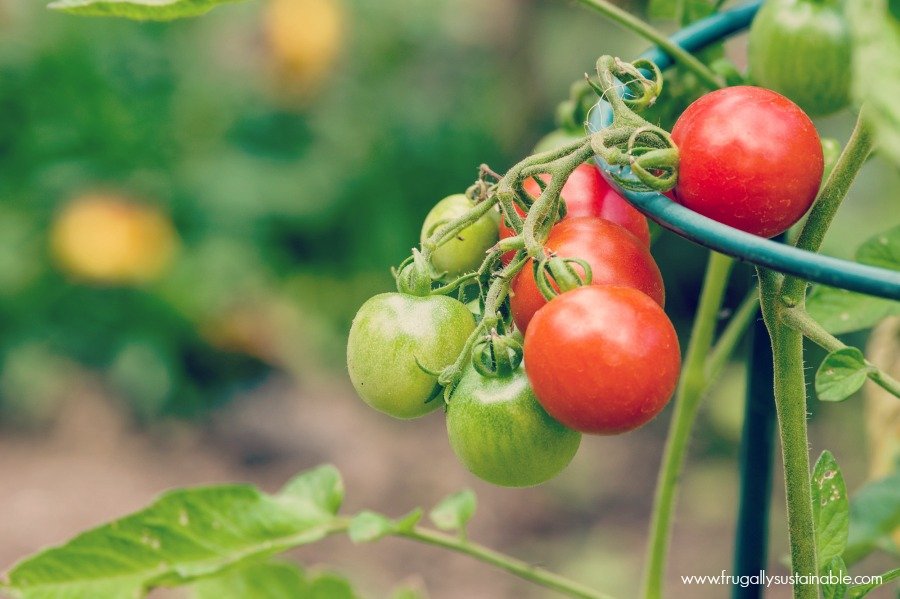
Tips for the Beginning, Small Space Gardener
Everything I’ve learned about gardening, I’ve learned through reading about growing cycles + gardening basics, taking to other gardening enthusiasts, and simple trial and error. And thankfully, kitchen gardens — while at risk of being forgotten — are experiencing revival.
Read More :: Raising with the Moon — The Complete Guide to Gardening and Living by the Signs of the Moon
Growing vegetables…even if it’s only ONE is an incredibly radical act of independence!
Now, let me share with you a few strategies to insure that you get the most out of your garden this season ::
- Create a custom design for your garden. Everyone’s garden looks different. And as we’ve established, it depends largely on the amount of space you have. Some may be able to put in large rows of crops, while others like us will utilize some sort of container instituting the Square Foot Gardening, or Vertical Gardening Methods. One of the best online gardening tools, Smart Gardener, can help you organize your plants and maximize your yield in the space you have…no matter how big or small.
- Grow plants from seed as much as possible. This alone provides a huge savings! While purchasing transplants from the nursery or local hardware store is a viable option…you can save nearly 80-90% of the price by growing the plants yourself from seed. Need help knowing when to start your seeds? Look here to find your best planting date for seeds. I also love this What to Plant Now tool. (Note :: My most favorite seed company is High Mowing Seeds. They have great a great selection of easy-to-grow seeds for small space gardens.)
- Buy cheap — or upcycled — gardening supplies. Please do not fall prey to the over-priced, gimmicky garden supplies sold in catalogs and in the stores. Recycle, or buy secondhand, as much as possible. Seeds can be started in egg cartons, yogurt containers, water bottles, or milk jugs. All of the raised beds I’ve every had, have been constructed from wood found by the dumpster or salvaged. Buckets make great grown containers. Check on Craigslist and shop yard sales for used pots and garden tools.
- Choose what you will grow carefully. Take time to seriously consider your growing space, and the yield that you’re aiming for, then choose the vegetables you will grow accordingly. For example, I have a very small growing space; therefore, growing a large broccoli plant that will yield enough for one small snack just doesn’t make sense when I could use the same area to grow Swiss chard which will produce a continuous harvest all season long.
- Grow what you eat the most of. Take inventory of the foods that you and your family eat most frequently…and grow those. Think too of those foods that are easy to can, ferment, dehydrate, or freeze.
- Grow organically. After years of gardening, I know the vegetables that have always been difficult to grow due to their sensitivities to fungi, insects, and pests. However, learning how to companion plant has revolutionized the way I do things. There’s no need for chemicals — even the organic ones. (Read more :: How to Make Your Own Organic Insecticide Spray)
- Use mineral-dense, living soil. When growing vegetables, especially when growing in containers, it is vital to use living soil — soil full of viable microbes, minerals, and magic! Look locally for soils suitable for containers that contain things such as earthworm castings, peat moss, and fish meal.
- Water. Water can be the make-it or break-it when it comes to container gardening. Using a municipal water source (can anyone say chlorine) to water your container vegetables is a surefire way to destroy your growing efforts. I use this water filter attached to my garden hose at all times when watering my plants.
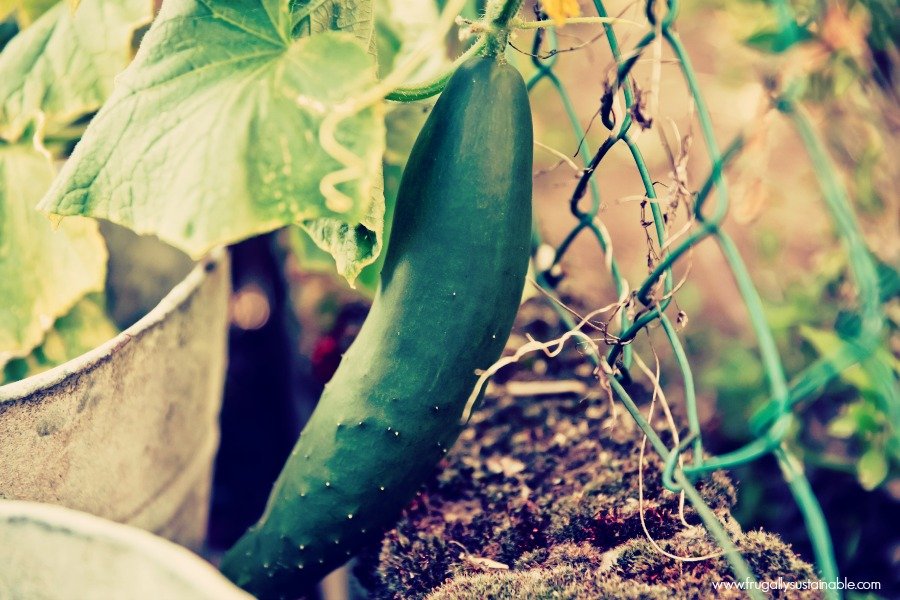
5 Easy-to-Grow Container Vegetables
With a sincere hope for a bountiful blessing this season…
…here are my 5 favorite container vegetables for beginning gardeners. Each are easy to start from seed — or purchase as starts from a local nursery — and will grow joyfully in containers on your patio, in your driveway, on your doorstep…wherever you find space.
- Tomatoes. The easiest, most productive varieties that I have grown have been the smaller cherry, grape, and roma tomato. They’re perfect for small spaces! (I love these.)
- Cucumbers. Growing cucumbers vertically in pots — using a trellis or tomato cage — has proven to be SUPER effective, producing exceptional amounts of fresh cukes. 2-3 plants in a larger 16″-20″ pot can yield plenty of pickles! (These are the cucumbers I grow.)
- Squash. Zucchini and summer squash grow exceptionally well in containers and provide amazing amounts of food! I love zucchini noodles…and during the months of harvest, I have my fill! (This zucchini is so easy to grow!)
- Beans. Green beans are wonderfully productive…and who doesn’t love a living teepee?!?! I love growing green bean teepees in my patio garden! They are so much fun, really easy to grow, and a wonderful place for your garden fairies to stay for the season! A large 20″ pot is big enough to construct a trellis using bamboo rods to support the vertical growth of pole beans such as the Kentucky Wonder.
- Greens. Greens such as spinach, swiss chard, and kale can produce for months and months when grown in containers! By cutting the outer leaves only as needed, the plants will provide an endless supply of nutrient-dense food! (This rainbow chard + lacinato kale + corvair spinach have ALWAYS grown well for me!)
Now it’s your turn! Share with us in the comments your favorite, easy-t0-grow container vegetables!

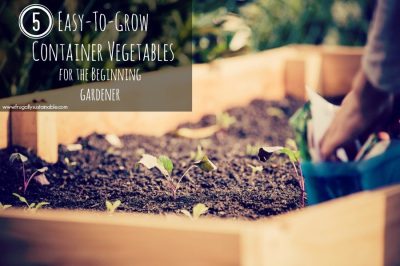
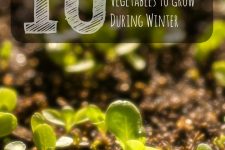
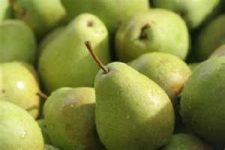

 One Love :: Universal Skin Healing Lotion :: Recipe
One Love :: Universal Skin Healing Lotion :: Recipe
Hi, thank you so much for this information! I live in an apartment and didn’t think I could grow many veggies in pots, but was so so so so so so so so (SO) happy to see that I can!I do have a couple of questions.
1. How do you train your cucumbers to climb if they are in a container? I Googled it and couldn’t really find anything. Do you just kind of wrap the chutes around the cage or trellis?
2. I was SO happy to see that you can grow greens in a container. So if you only harvest the outer leaves, it keeps producing? When you say “outer leaves”, how “outer” are we talking about, like the first two “rows” or so?
Hi Meurramya! YES! You can grow sooooo many vegetables in pots right on your patio! So concerning the cucumbers, I grow mine vertically — in pots — using an extra large tomato cage I got at a local nursery. As the vines grow, you simply train them to wrap around the cage (or trellis, whichever you choose). Then they totally start to figure it out and do it on their own:) As for the greens, my spinach I simply cut the biggest leaves, kale the same, and the chard I cut the outermost leaves. I cut them as I need them for salads/meals/smoothies. Like this morning I made a kale smoothie. I went to the kale in the pot and cut the biggest leaves. This afternoon I will have a spinach/kale salad…I’ll do the same again:) Hope this helps + encourages:)
It definitely does, thanks so much!
Spider mites continue to devastate my 3rd floor container garden. I clean the pots and use new organic soils each year. When the mites first appeared 3 years ago, in a very hot dry spell in southern Wisconsin, I misted with ice cold water until I broke the mister. I hated it when they killed the tomatoes.
Now I just plant and hope for the best. The squirrel digs up the plants in early spring, but I just repot them. If it gets too bad, I’m going to get a large plastic owl and keep moving it around every night.
Right now I have field peas, green beans, tomatoes, cucumbers, lavender, Rosemary, lemon basil, 5 tea roses, and mint, spinach and kale. I love to make tea from the rose hips and mint.